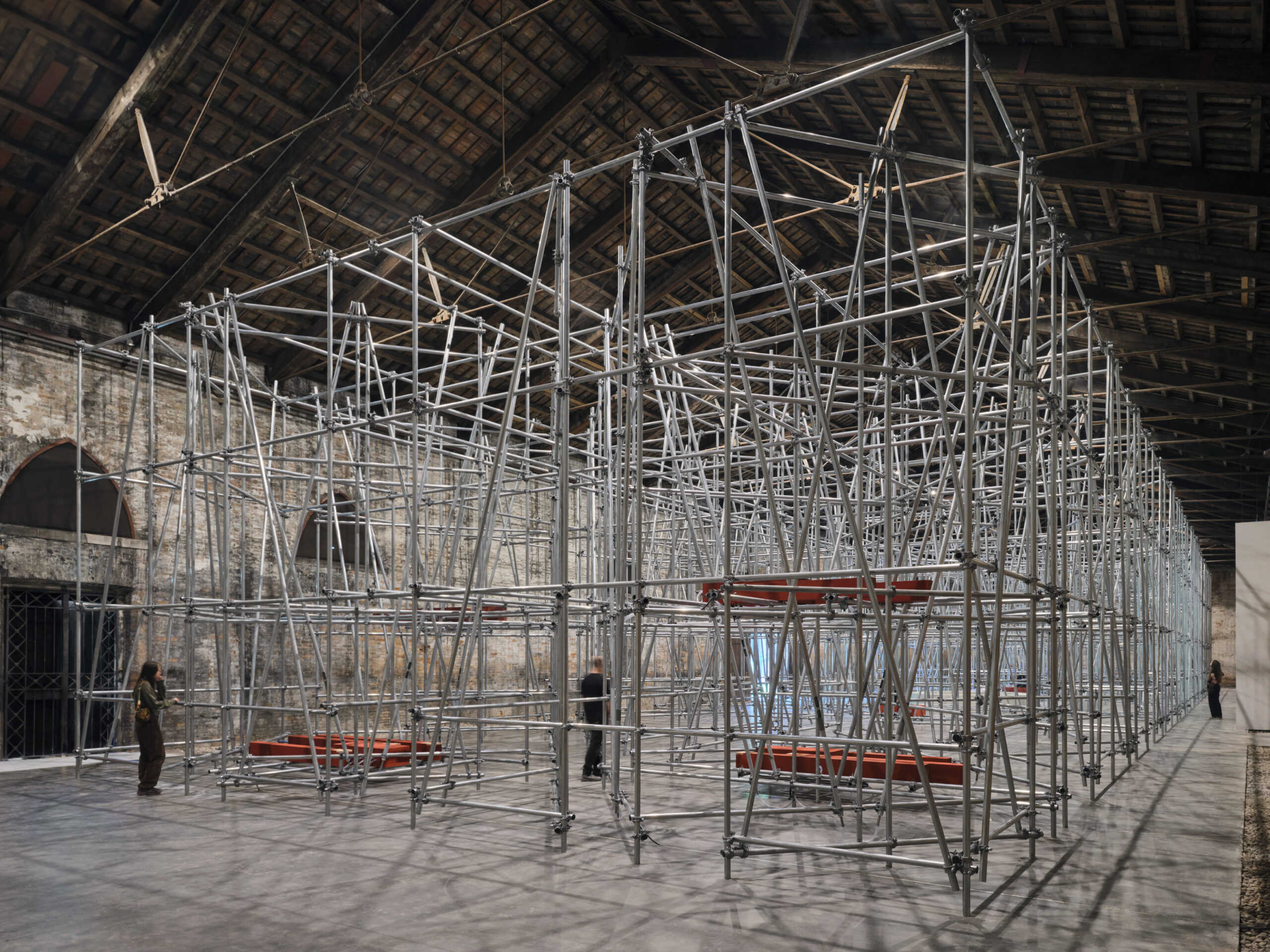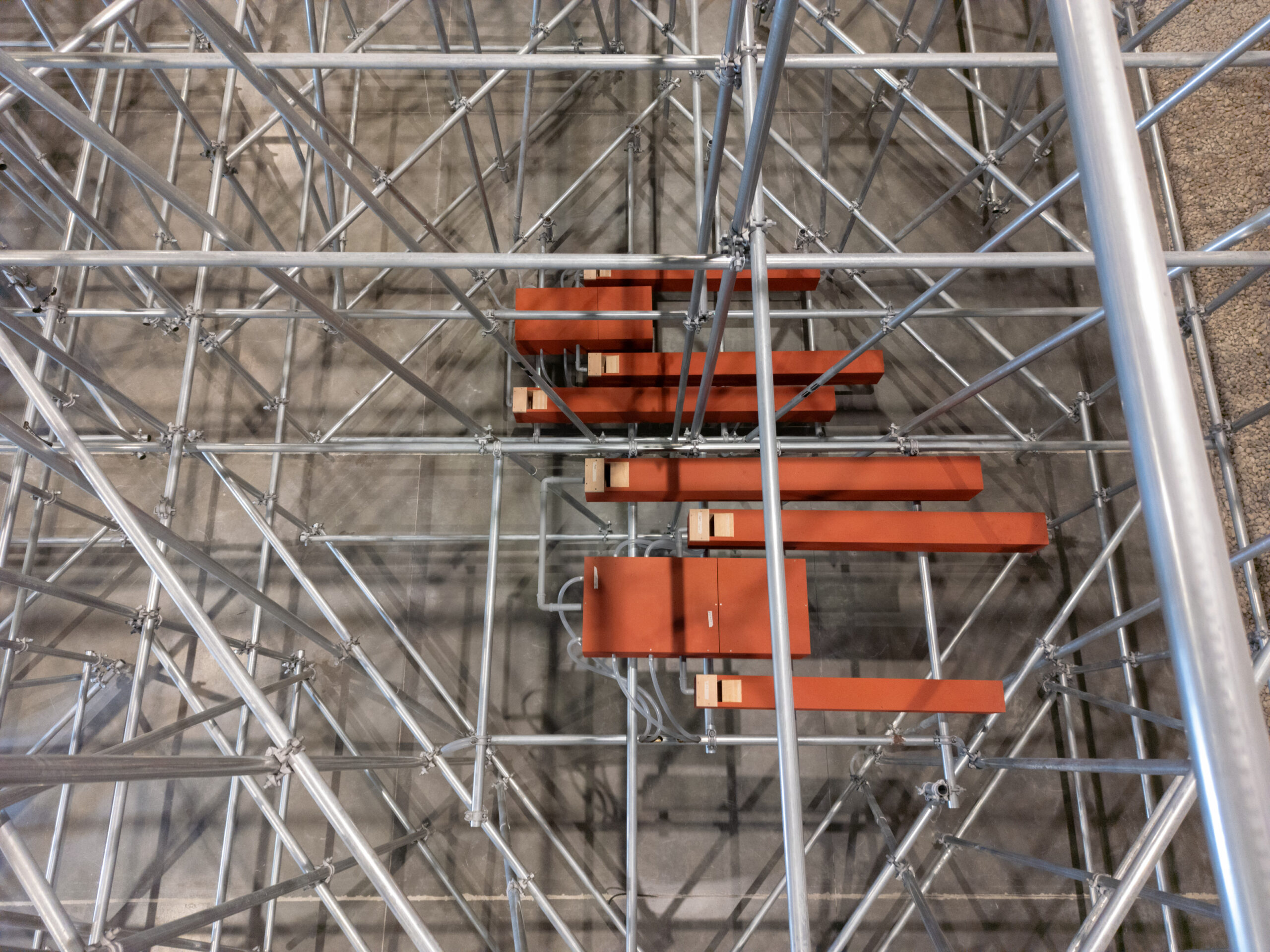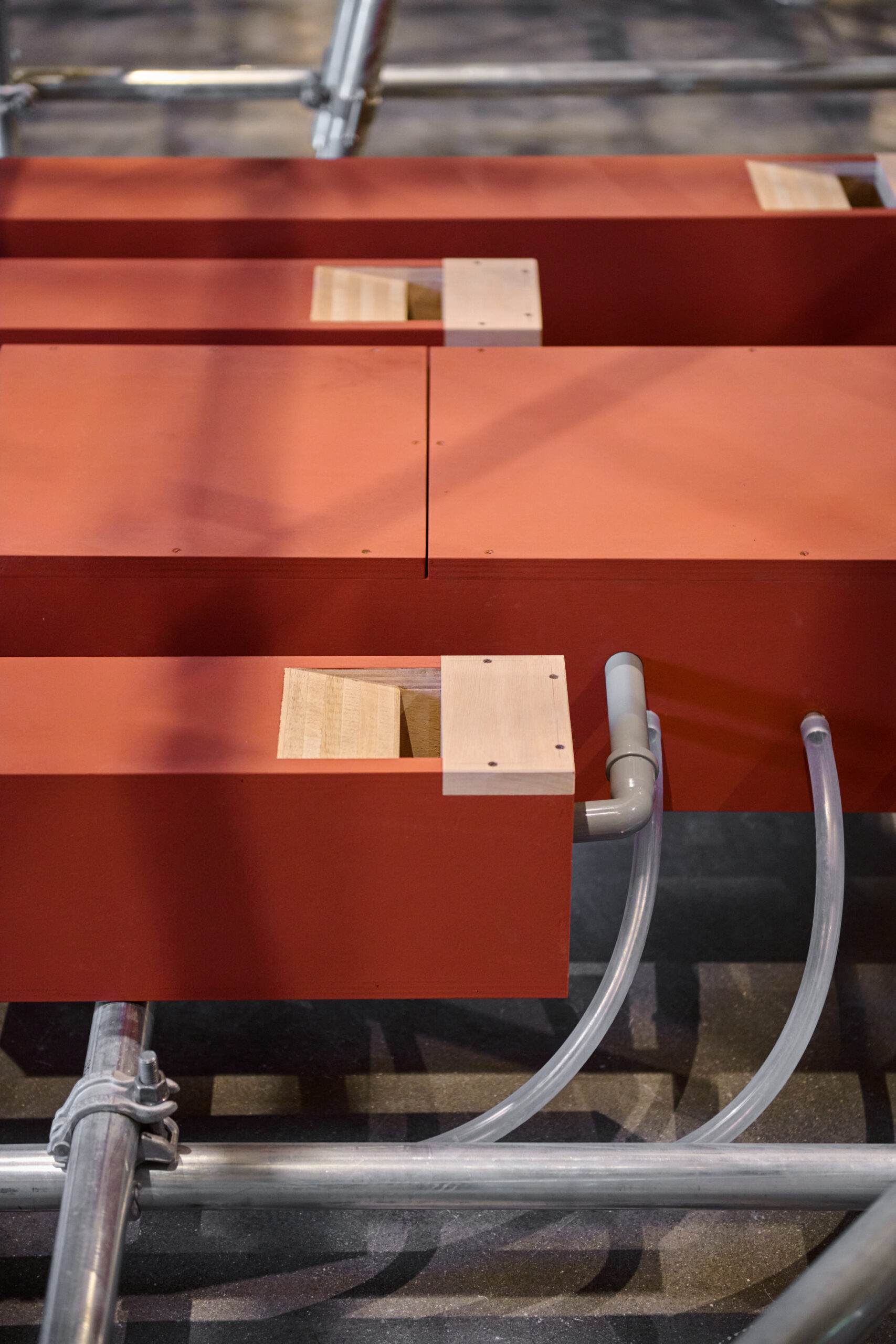
Photo © Agostino Osio / AltoPiano
60th International Art Exhibition – La Biennale di Venezia – Italian Pavilion
Art support
April 20-November 24, 2024 – Venice
Italian Pavilion
60th International Art Exhibition – La Biennale di Venezia
April 20 – November 24, 2024
Tese delle Vergini, Arsenale, Venice
Commissioner: Angelo Piero Cappello
Curator: Luca Cerizza
Artist: Massimo Bartolini
with the participation of Caterina Barbieri, Gavin Bryars, Kali Malone
Due qui / To Hear is the title of the project for the Italian Pavilion at the 60th International Art Exhibition – La Biennale di Venezia (April 20– November 24, 2024), presented with the support of the Directorate-General for Contemporary Creativity of the Italian Ministry of Culture.
Curated by Luca Cerizza (with the assistance of Francesca Verga), it centers on a large-scale installation and sound work by artist Massimo Bartolini, who has returned to the Biennale after his previous participation in the Italian Pavilion at the Biennale Arte 2013. Working in close relation to its setting, Due qui / To Hear leads viewers through each part of the Italian Pavilion, including the garden, in an alternation of full and empty spaces, movement and rest, that brings unexpected encounters with sound-based and performative pieces and environments.
Playing on a translation that seems wrong at first glance – “two here” (in Italian, due qui) and “to hear” – the title suggests that listening, “lending an ear,” is an action directed towards others. Meeting and listening, relation and sound, have been inseparable concepts throughout the three decades of Massimo Bartolini’s practice. In Due qui / To Hear the acoustic paradigm should thus be thought of as a physical experience, but also as a metaphor and an invitation to pay attention, to be open to others.
In this sense, the project for the Italian Pavilion engages with the theme of the 60th International Art Exhibition – La Biennale di Venezia, Stranieri Ovunque / Foreigners Everywhere, curated by Adriano Pedrosa; it offers a new slant on the idea, suggesting that to avoid being foreigners, we must start by not being foreign to ourselves. “Listening to the self” is therefore a crucial way to understand the individual’s position in the world and in all the relationships that one weaves within society.
Massimo Bartolini, Pensive Bodhisattva on A Flat, 2024
2500×32×32 cm, statue 40×9×9 cm
50 minutes of music / 10 minutes of silence
wood, motor, bronze
Courtesy the artist, Massimo De Carlo, Frith Street Gallery and Magazzino
Made up of sculptures, installations, sound works, and performances, Due qui / To Hear offers a manifold, multisensory experience. The project, born out of a respectful dialogue with the Pavilion – with no structural additions or any form of display – takes viewers on a three-part path that can be travelled in either direction, letting them move freely within the spaces. In Tesa 2, for instance, they are greeted by the bronze statue of a Pensive Bodhisattva.
This image from Buddhist art represents a person who, having attained enlightenment, voluntarily gives it up in order to show others how to get there, by embracing inactivity. This statue is emblematically placed at one end of a long recumbent column, a line of demarcation that, despite its architectural appearance, reveals its true nature as an organ pipe by producing a steady drone. The suspended state suggested by the Bodhisattva is underscored by this low vibration, which evokes a circular kind of time.
Massimo Bartolini, Due qui, 2024
12×6×50 m
50 minutes of music / 10 minutes of silence
iron, cast iron, motors, electronics
Music composed by: Caterina Barbieri, Kali Malone
Courtesy the artist, Massimo De Carlo, Frith Street Gallery and Magazzino
Massimo Bartolini, Conveyance, 2024
diameter 370 × height 45 cm
coated stainless steel, water, clay, motor
Courtesy the artist, Massimo De Carlo, Frith Street Gallery, and Magazzino
This focus on listening to oneself and to others can also be seen in the dialogue established between forms and styles from the Italian cultural tradition (Baroque music and gardens) and even more specifically, the Venetian one (antiphonal music and organs), and those of other cultures and climes (Buddhist art and spirituality); between the representation of Italy, and the involvement of foreign musicians and writers in Massimo Bartolini’s project.
As if it were the fountain in this stylized garden, a circular minimalist sculpture (Conveyance, 2024) occupies the center of the space. What looks like a bench where visitors can gather and rest is also a point for contemplating the motion of a conical wave. This quiet oasis – a beating heart within the exhibition – is the ideal spot for listening to the composition written for the project by two musicians at the leading edge of experimental and electronic music: Caterina Barbieri (b. 1990, Italy) and Kali Malone (b. 1994, United States).
Source: Padiglione Italia Press Release, Rome, February 27, 2024













